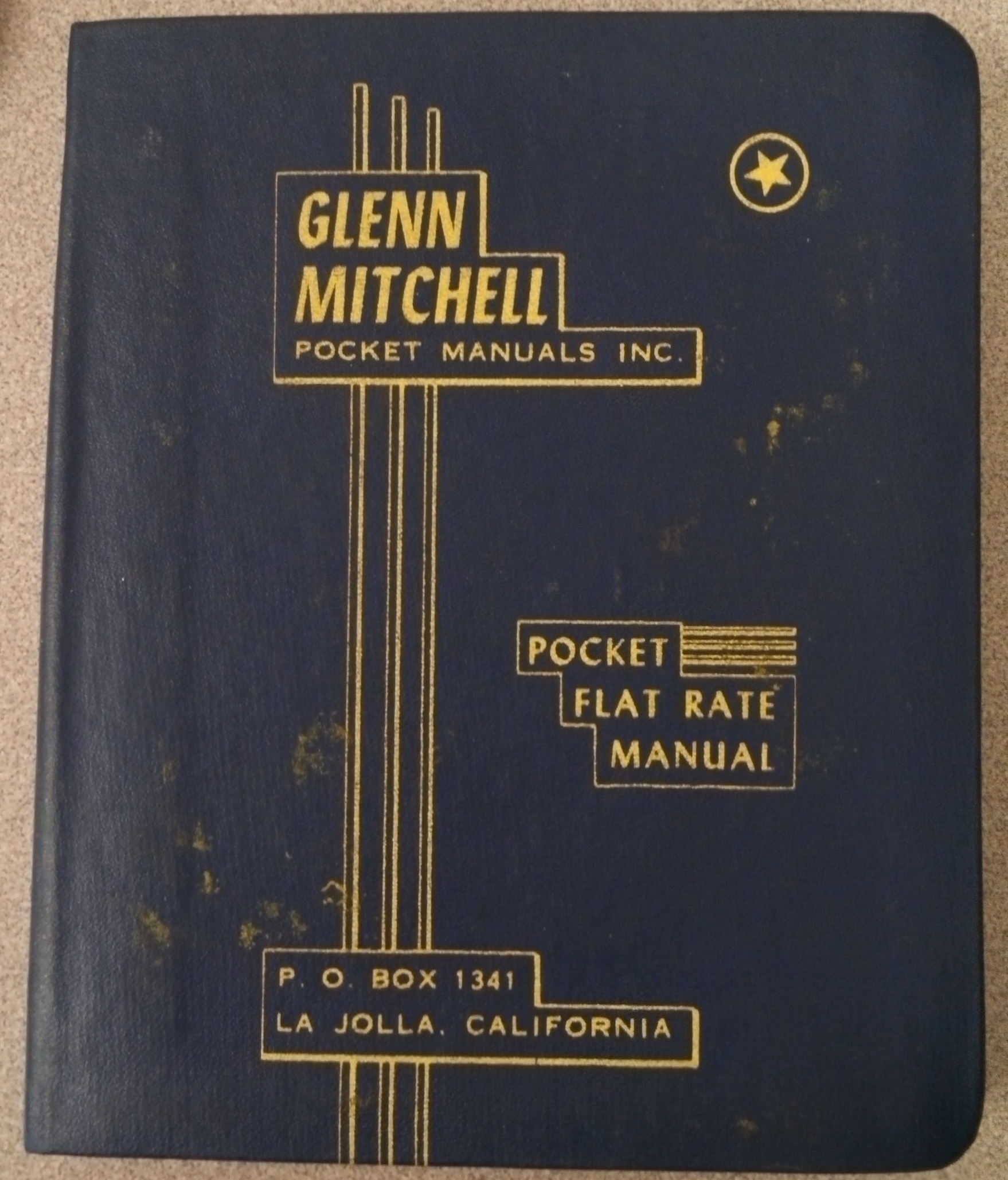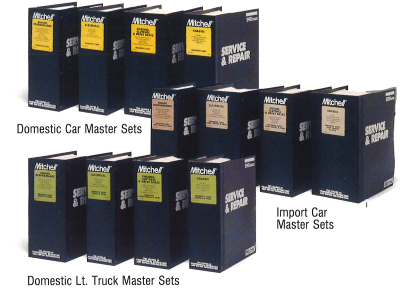I’m sure my experience was similar to many of you reading this. My first exposure to labor times came when I was a technician at a dealership. I would make (or sometimes not make) my daily pay based on the manufacturer’s “warranty time”, or what we called “customer pay” time. Warranty time was almost always very low, so it made it very difficult to make a day’s pay if I didn’t get some customer pay work mixed in at the same time.
Now enter the Labor Estimation Guide, also known as ‘Estimator’ or labor time guide.
We can thank the late Glenn Mitchell, a San Diego area Chrysler dealership parts manager, for our first Estimator Guide book. About 12 years after founding Mitchell Manuals in 1946, Glenn published his first pocket Estimator Guide.

That original pocket guide soon grew to become a booklet, then to the three-inch thick bound book, and eventually becoming a multi-volume set that, honestly, became quite difficult to use. Nevertheless, their torn, dirty and “used-up” pages saved us a lot of heartache and headache, while helping our shops make a fair profit.
Those thick black books were always within easy reach, and most everything we needed could be gleaned from their greasy pages. To keep up with the times and the new and ever-changing models, we’d always begrudgingly “bite the bullet” and purchase the latest guide every year or so. Because as we learned, working without it would mean scrambling to figure out how to estimate that “new” car that just rolled into the service drive!

Going now into the 21st century, we hit the “digital age”. In 2002 our internet-based products, including OnDemand5 and Shopkey5 were released with repair procedures, specifications, maintenance schedules and TSBs included. Shortly after, Estimator went online and the last of the “paper” labor time guides would be printed and sold by the end of 2010.
This new estimator delivery method meant not only did we get current labor times with no need to update every year, but we got both foreign & domestic cars and light duty trucks back to 1974 for labor and 1980 for parts. On top of that, by simply tabbing between the parts and labor screens, a customized printable estimate could be built and shared with the customer. ProDemand auto repair information was the next gen as far as repair procedures platform goes, while Estimator labor estimate stayed virtually the same. Fast forward again to today with our newest features, where parts & labor can be viewed simultaneously, increasing productivity.
The move from digital to internet-based programs was crucial. Consider this for perspective: In 1974, Estimator labor estimate covered about 180 cars and light truck models. Jump to 2000 and that number is 275. Fast forward once again to today and just in our light duty guide alone we have just shy of 400 vehicles! Not only that, with added systems and complexity, countless new components and advanced electrical systems have been added to the overall coverage.
We’re not done yet!
Mitchell 1 continues to innovate, provide and add more vehicles and repair information to cover the ever-increasing catalog of vehicles, parts and services that keep your repair shops covered for any vehicle that you may come across!
Let’s see what the next few years hold!
You can click to read a more Detailed History of Mitchell 1.
Want to learn more about ProDemand?
Request a FREE DEMO!
You may also like to read:
ProDemand is Part of Your Team: How Auto Repair Software Can Improve Your Sales!






